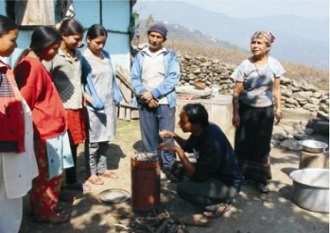Environ Health Perspect. 2010 Jan 7.
Within Neighborhood Patterns and Sources of Particle Pollution: Mobile Monitoring and GIS Analysis in Four Accra Communities.
Dionisio KL, Rooney MS, Arku RE, Friedman AB, Hughes AF, Vallarino J, Agyei-Mensah S, Spengler JD, Ezzati M. Harvard School of Public Health.
Background: Sources of air pollution in developing country cities include transportation and industrial pollution, biomass and coal fuel use, and re-suspended dust from unpaved roads.
Objectives: To understand within neighborhood spatial variability of PM in communities of varying socioeconomic status (SES) in Accra, and to quantify the effects of nearby sources on local PM concentration.
Methods: We conducted one week of morning and afternoon mobile and stationary air pollution measurements in four study neighborhoods. PM2.5 and PM10 were measured continuously, with matched GPS coordinates; detailed data on local sources were collected at periodic stops. The effects of nearby sources on local PM were estimated using linear mixed effects models.
Results: In our measurement campaign, the geometric means of PM2.5 and PM10 along the mobile monitoring path were 21 and 49 microg/m3, respectively, in the neighborhood with highest SES and 39 and 96 microg/m3, respectively, in the neighborhood with lowest SES and highest population density. PM2.5 and PM10 were as high as 200 and 400 microg/m3 respectively in some segments of the path. After adjusting for other factors, nearby wood and charcoal stoves, congested and heavy traffic, loose dirt road surface and trash burning had a the largest effects on local PM pollution.
Conclusions: Biomass fuels, transportation and unpaved roads may be important determinants of local PM variation in Accra neighborhoods. If confirmed by additional or supporting data, the results demonstrate the need for effective and equitable interventions and policies that reduce the impacts of traffic and biomass pollution.



